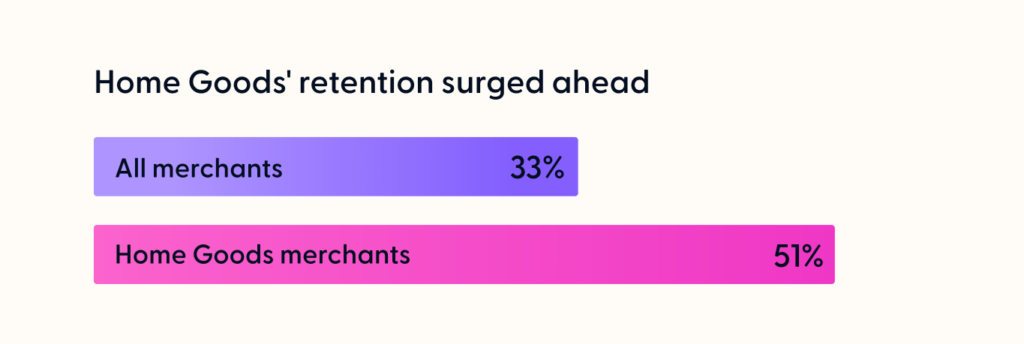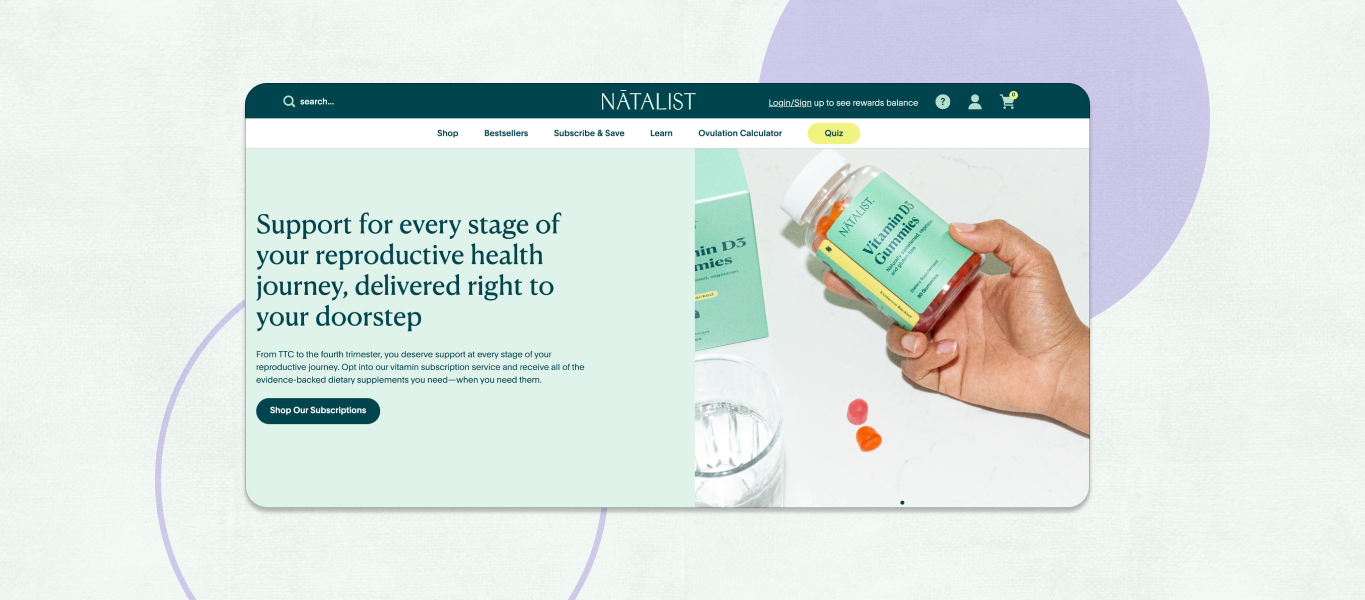While there are several metrics that are critical to ecommerce merchants’ success, few are more important in today’s market than customer churn and retention. With the rise of inflation over the past year, competition for customers’ dollars has become more and more fierce. And, now more than ever, merchants are focusing on what they can do to earn long-term customer loyalty.
In our latest annual industry report, we analyzed over 15,000 subscription merchants and their active customers to uncover a hopeful takeaway. Year-over-year, across product verticals, these merchants’ customer churn rates decreased, while retention rates increased in 2022.
So—why were subscribers sticking around longer and in bigger droves? And how exactly did merchants cultivate this staying power with their recurring customers? In this blog post, we’ll cover the strategies that helped subscription brands rise above the competition.
Dive into the full analysis, complete with interactive charts, data visualizations, and other tools to help you benchmark your own business, in our 2023 State of Subscription Commerce report.
Key takeaways
- In 2022, subscription merchants showed year-over-year improvements in both customer churn and retention.
- The most successful subscription merchants reduced their churn by making it easy for subscribers to stick with them.
- To cultivate long-term customer retention, it’s key to ground your retention strategies in customer data.
Customer churn

Subscription merchants’ churn decreased in 2022
Seasonal spikes in churn, particularly following certain promotional periods (for example, Cyber Week) are normal and expected for ecommerce merchants. After all, these promotional periods often attract a large volume of new customers with appealing deals and discounts, and naturally, some of these subscribers drop off as time goes on.
While subscription merchants’ churn saw this same fluctuation in 2022, overall, their monthly churn rates decreased over the year.
Other customer churn findings from 2022 include:
- Beauty & Personal Care merchants saw the lowest overall customer churn among verticals, while Pets & Animals merchants saw the most substantial year-over-year decrease.
- Fashion & Apparel brands saw the greatest fluctuation in month-over-month churn, with churn varying by 2.5% in 2022. These brands could be impacted more by seasonal trends or promotional periods than other verticals.
- Merchants with 50,000 or more subscribers held the lowest overall churn rates of any subscriber count group. This suggests that churn mitigation may become more effective the more customer data and other resources are available to a merchant.
To mitigate churn, make it easy for customers to stick with you
Churn mitigation should be a constant focus and priority for all ecommerce brands at all times. But in times of high inflation, it’s especially critical to make it easy for your customers to stay with your brand and prevent them from leaving for a competitor.
To effectively reduce your churn, it’s key to focus on mitigation from a variety of angles. Focus on finding the right delivery cadence so your customers can replenish your products on whatever schedule suits their needs. You should also study your churn data over time to identify the milestones where customers are likely to churn. Once you do this, you can implement specific strategies targeted to prevent them from wanting to leave.
Finally, you should focus on both active and passive churn. With the latter, make sure your automations are set up in case customers are at risk of churning—for example, set up dunning notifications that alert customers when their credit card is declined. Make sure that your subscription solution is set up to handle this for you, and integrate with any additional tools to help you win back lost customers.
“The reason you got to 10,000 subscribers should still be the reason that you can continue to grow beyond 40 or 50,000 subscribers.”
Ryan Fair, VP of Marketing & Ecommerce, Clearly Filtered
Customer retention

On average, subscription merchants saw boosted 12 month retention in 2022
A report by Omniconvert found that after 200 days, the chances of an ecommerce customer returning to make an additional purchase drop to just 20%. Among the subset of ecommerce merchants and their customers we studied in this report—specifically, subscription merchants—we found that their subscribers stuck around longer and in bigger numbers than those general ecommerce customers, with 45% retention after 6 months and 33% retention after 12 months.
Other customer retention findings from 2022 include:
- Home Goods merchants topped the charts for both the highest overall and highest percentage increases in customer retention, despite showing slight year-over-year reductions in AOV and LTV.
- Merchants with fewer than 50,000 subscribers saw year-over-year increases in customer retention.
- Merchants with 50,000 or more subscribers saw slight decreases in year-over-year customer retention.
To keep customers with your business, ground your retention strategies in customer data
Your existing customers have enormous value for your business. Therefore, it’s important to not just guess at how to best retain them—rather, you must ground your retention strategies in customer data.
To accomplish this, you can use segmentation (for example, dividing your customers into groups of subscribers vs. non-subscribers) to reach different groups with common traits more effectively. You can also research the ideal number of product variants or SKUs for your business—which often varies by vertical. Ensure your customers have enough options to stay excited and stick around, but not so many that they become overwhelmed and leave without making a purchase.
Finally, take advantage of promotional periods to drive large amounts of business. These periods can often be an incredible value driver for merchants: In 2022, we found that subscription merchants saw a 41% increase in new subscribers across all the days between Black Friday and Cyber Monday.
To get the most value out of these periods, conduct research, including A/B testing and customer surveys, to identify targeted marketing efforts that will help you retain these customers more effectively.
“For both acquisition and retention, it’s key to send the right offer to the right segment.”
Ari Ziskin, Director of Ecommerce, AutoBrush
For more analysis & strategies, read the interactive report
While subscription merchants’ customer churn and retention improved significantly on average, we found even more positive insights on the state of recurring commerce in 2022.
Explore our interactive 2023 State of Subscription Commerce report to learn how over 15,000 subscription merchants in a variety of product verticals and subscriber count ranges performed in 2022 according to five KPIs, including AOV, LTV, and MRR—and how their subscribers interacted with their orders in informative new ways.



